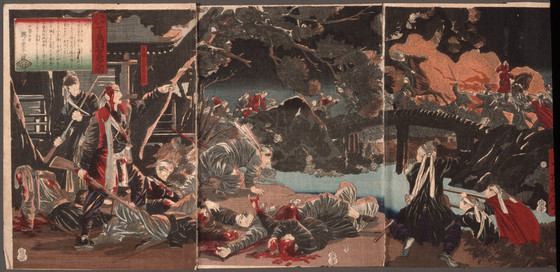The Battle of the Lower Toba at Fushimi in Yamashiro Province

Please log in to add this item to your gallery.
View comments
No comments have been posted yet.
Add a comment
Please log in to add comments.
Please log in to add tags.
* Nearly 20,000 images of artworks the museum believes to be in the public domain are available to download on this site.
Other images may be protected by copyright and other intellectual property rights.
By using any of these images you agree to LACMA's Terms of Use.
The Battle of the Lower Toba at Fushimi in Yamashiro Province
Alternate Title: Jōshū ni oite Fushimi sensō no zu Keiō yonen boshin shōgatsu mikka
Japan, 1874, 12th monthPrints; woodblocks
Triptych; color woodblock print
13 9/16 x 28 13/16 in. (34.4 x 73.1 cm)
Herbert R. Cole Collection (M.84.31.204a-c)
Not currently on public view


